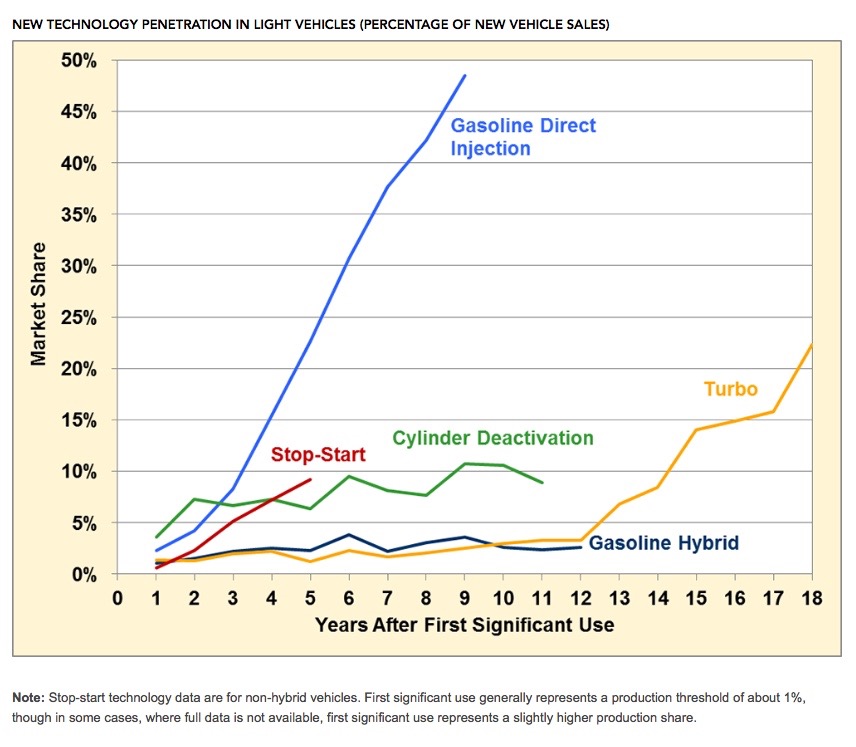Use of gasoline direct injection in light vehicles grows
The U.S. Department of Energy (DOE) reports that gasoline direct injection (GDI) engine technology has been rapidly drawn into the light-duty vehicle market. Nearly half of new light vehicles sold in the U.S. now incorporate some variation of a GDI engine, which entered the market only nine years ago.
Prior to GDI, the power output of gasoline engines was generally controlled by restricting the flow of air into the combustion chamber. The power output of GDI is increased by adding more fuel directly into the combustion chambers via high-pressure injectors. In this way, GDI and diesel engines are similar in operating principle. GDI also shares the thermal efficiency characteristics of diesel engines, as they are both capable of lean-burn (i.e., a very low fuel-air ratio).
Combined with turbo charging, GDI engine design can enable significant reductions in fuel consumption and engine downsizing, while providing higher power output for bursts of acceleration. The capability of GDI technology appears to have made it a very popular design choice for automakers working to comply with increasingly stringent regulations to reduce carbon dioxide emissions due to the combustion of fuel. The market success of GDI relative to other fuel-saving technologies is evident in the U.S. DOE’s chart below:

On the downside, GDI engines are also confronted by the same emissions problems associated with diesel engines: high emissions of oxides-of-nitrogen and fine particulate matter that pollute the air and contribute to smog formation. Special exhaust after-treatment technologies are needed to address this problem.
- Full story at Green Car Congress.
- Source & Chart: U.S. Department of Energy. “Fact #978: New Technology Penetration in Light Vehicles.” Energy.gov, 22 May 2017.
- Photo: Direct gasoline injection (Alientech).

